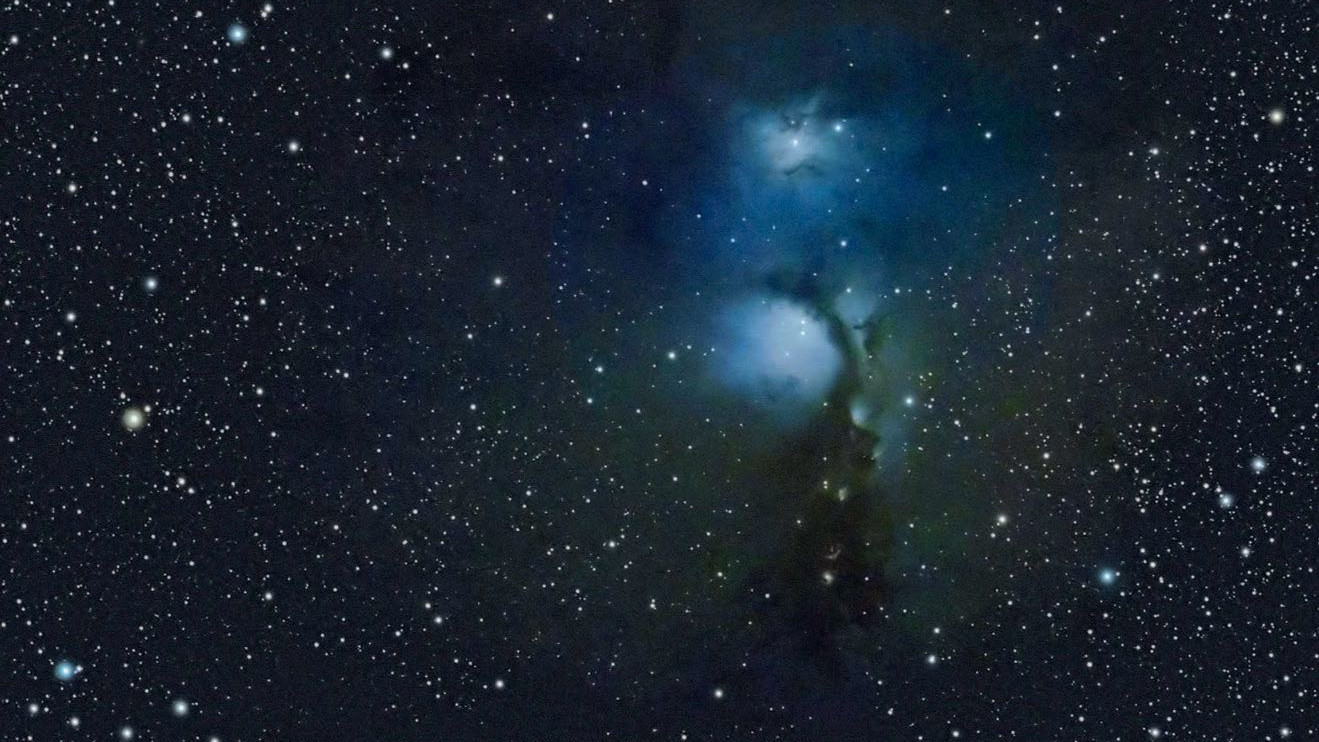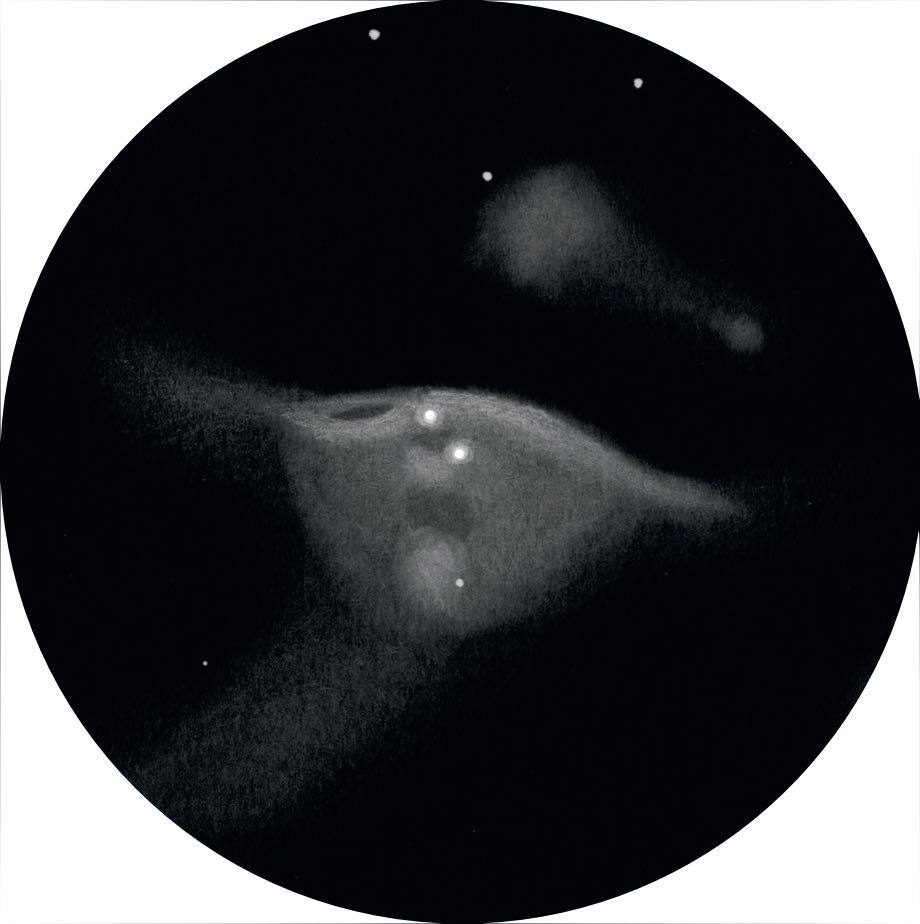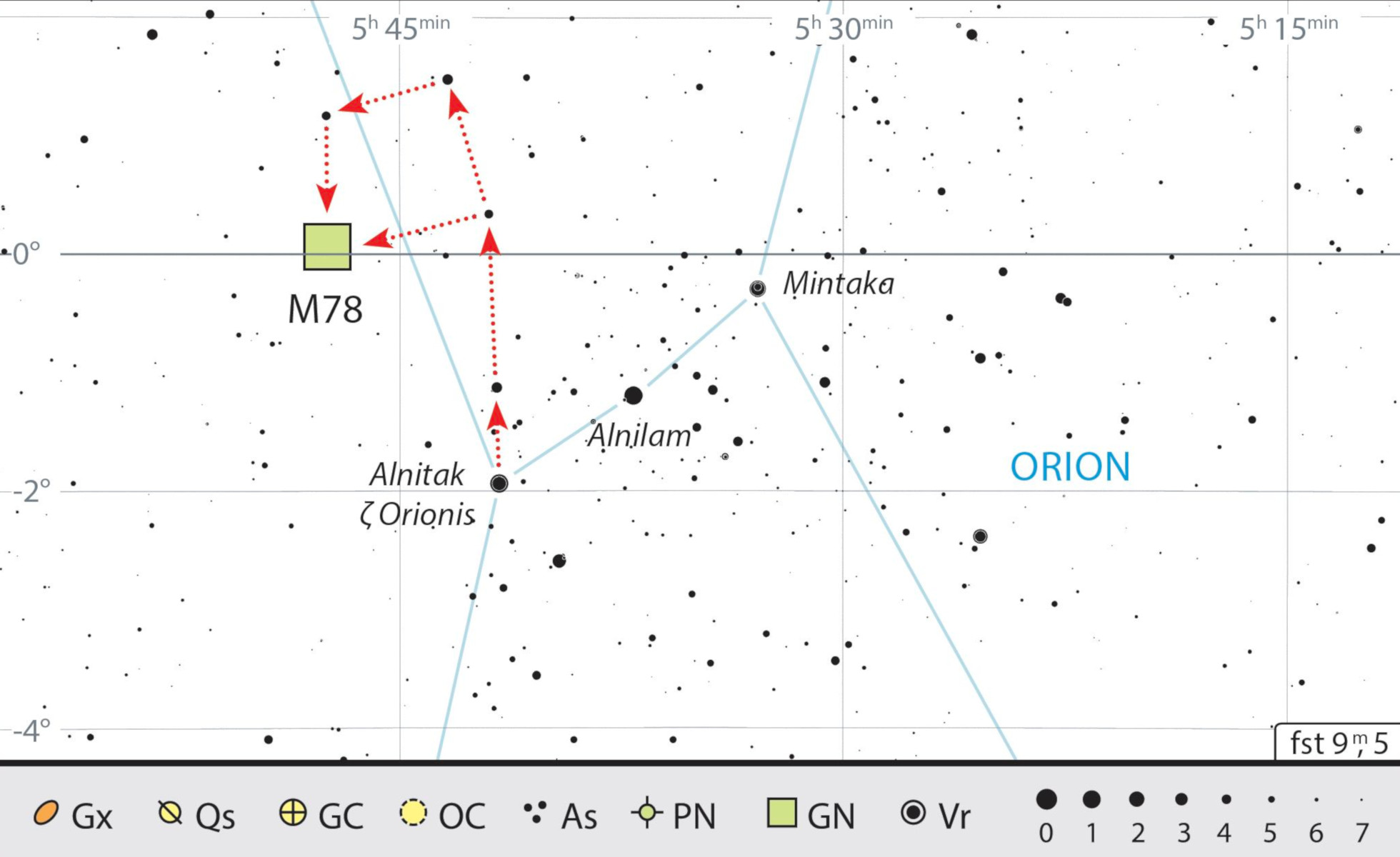M78 - the brightest reflection nebula
The reflection nebula M78 looks a little like a faint comet. Dark, clear country skies give us a glimpse of dust and structures.
 The reflection nebula M78 in
the constellation of Orion. Horst Ziegler / CCD Guide
The reflection nebula M78 in
the constellation of Orion. Horst Ziegler / CCD GuideMessier 78 (NGC 2068), the brightest reflection nebula in the night sky, is to be found above the stars that form Orion’s Belt in the constellation of Orion. In rural areas, under a dark and clear night sky, M78 is one of the few reflection nebulae that can even be detected with binoculars. It is 1,300 light years away from Earth and has a brightness of magnitude 7.8. Its angular size is 8'×6', and it is more than four light years across.
Diffuse nebula with two cores
 Drawing of M78.
Uwe Glahn
Drawing of M78.
Uwe GlahnM78 was discovered by Pierre Méchain at the beginning of 1780, and Charles Messier included it in his catalogue of diffuse objects on 17 December in the same year. Messier also included Méchain's description of M78 as two bright nuclei surrounded by a diffuse nebula. M78 cannot be seen with the naked eye. To find it, pan your binoculars or telescope finder around 2.5° to the north-east of the left, eastern star (ζ Orionis or Alnitak) in Orion’s Belt. It may also be helpful to orient yourself using the dotted lines indicating the asterism on the finding chart below.
With 10×50 binoculars, M78 can be seen as a faint nebula speck. In telescopes with a 100 mm aperture and a magnification of around 50 times, it looks like a small, faint comet with a double nucleus. These are two closely spaced young stars (brightness of magnitudes 10.4 and 11 and 50.4” apart) whose bluish light is scattered by the reflection nebula. The north-western part of the nebula looks clearly defined, while other parts blend gradually into the background. The south-eastern part looks especially like a comet tail.
Region with few stars
The north-western edge of the nebula is revealed using telescopes with a 200-mm aperture. In the centre, a fainter magnitude 13 star becomes visible, which is located south of the two brighter stars. Compared to other areas of Orion, it is noticeable that the region around the nebula has few stars. Larger telescopes with apertures of 250 to 300 mm reveal even more details. The whole nebula region is covered by dark dust. Cloud-like structures are visible. The peripheries are even more easy to recognise and the northern section appears well defined.
By the way, a nebula filter does not provide a better perception of fine detail, as the reflection nebula is only scattering the continual radiation from the stars. For this reason, a dark and clear country sky is essential to observe M78.
 Finding chart of M78 in Orion. J. Scholten
Finding chart of M78 in Orion. J. ScholtenAuthor: Michael Feiler / Licence: Oculum-Verlag GmbH
